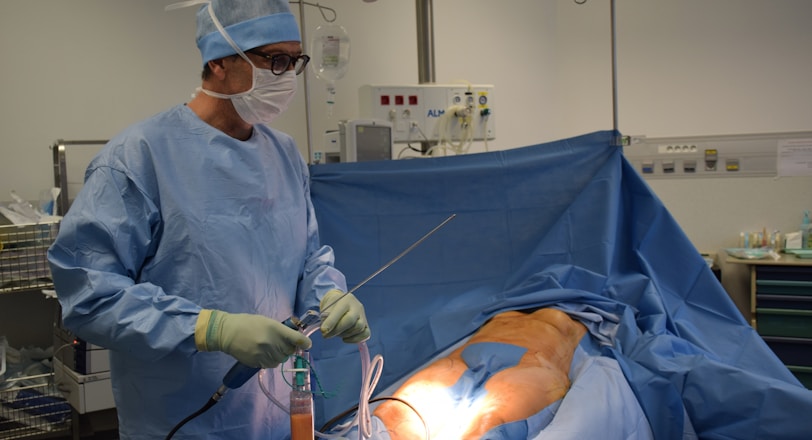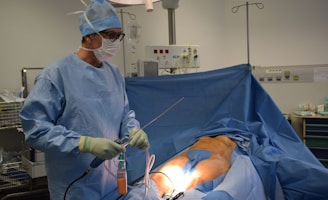What Is Surgical Abortion? A Comprehensive Guide to the Procedure and Safety Guidelines
Surgical abortion is a medical procedure used to terminate a pregnancy. It involves the removal of the fetus and other pregnancy-related tissues from the uterus. This article aims to provide a deep understanding of surgical abortion, including the procedure itself, safety guidelines, and a balanced view of the positive and negative reviews surrounding this controversial topic.
Dr naina
3/1/20243 min read


Introduction
Surgical abortion is a medical procedure used to terminate a pregnancy. It involves the removal of the fetus and other pregnancy-related tissues from the uterus. This article aims to provide a deep understanding of surgical abortion, including the procedure itself, safety guidelines, and a balanced view of the positive and negative reviews surrounding this controversial topic.
The Procedure
Surgical abortion can be performed using different techniques, depending on the gestational age of the pregnancy. The two most common methods are:
Vacuum Aspiration: This is typically used for pregnancies up to 16 weeks. The cervix is dilated, and a suction device is inserted into the uterus to remove the pregnancy tissue.
Dilation and Evacuation (D&E): This method is used for pregnancies beyond 16 weeks. It involves dilating the cervix and using surgical instruments to remove the fetus and other tissues from the uterus.
Safety Guidelines
When considering a surgical abortion, it is crucial to prioritize safety. Here are some important guidelines to ensure a safe procedure:
Choose a reputable healthcare provider: Look for a licensed and experienced healthcare professional or clinic that specializes in abortion services.
Discuss your medical history: Provide accurate information about your medical history, including any allergies, previous surgeries, or ongoing medications, to help the healthcare provider assess any potential risks.
Understand the risks and complications: While surgical abortion is generally safe, it is essential to be aware of potential risks, such as infection, bleeding, or damage to the uterus or cervix. Your healthcare provider should explain these risks to you.
Follow pre-procedure instructions: Your healthcare provider will provide specific instructions to prepare for the abortion procedure. This may include fasting before the procedure or taking certain medications.
Arrange for a support person: Having a trusted friend or family member accompany you to the clinic can provide emotional support and assistance during the process.
Follow post-procedure care: Your healthcare provider will provide instructions for aftercare, including information about managing pain, monitoring for complications, and scheduling a follow-up appointment.
Negative Reviews
As with any medical procedure, surgical abortion has its share of negative reviews and concerns. Some common negative experiences reported by individuals who have undergone surgical abortion include:
Physical discomfort: Some women experience pain, cramping, or discomfort during or after the procedure. However, these symptoms are usually temporary and can be managed with pain medication.
Emotional impact: Abortion can be an emotionally challenging decision for many individuals. Some may experience feelings of guilt, sadness, or grief following the procedure. It is important to seek emotional support if needed.
Regret: A small percentage of women may experience regret or ambivalence after having an abortion. It is crucial to thoroughly consider all options and seek counseling if necessary.
Positive Reviews
While surgical abortion is a sensitive and personal decision, many individuals have positive experiences with the procedure. Some reasons individuals may express positive reviews include:
Relief: For those who were not prepared or able to continue a pregnancy, surgical abortion can provide a sense of relief and the opportunity to regain control over their reproductive choices.
Improved quality of life: Some individuals feel that having an abortion allows them to prioritize their education, career, or existing family responsibilities, leading to an improved overall quality of life.
Empowerment: Making the decision to have a surgical abortion can be empowering for individuals who value their autonomy and reproductive rights.
Conclusion
Surgical abortion is a medical procedure used to terminate a pregnancy. It is essential to prioritize safety by choosing a reputable healthcare provider, understanding the risks and complications, and following pre and post-procedure guidelines. While negative reviews and concerns exist, many individuals also have positive experiences, emphasizing the relief, improved quality of life, and empowerment that surgical abortion can provide. Ultimately, the decision to have a surgical abortion is deeply personal and should be made based on individual circumstances and values.
#surgicalabortion #Surgicalvsmedicalabortion #surgicalabortionsideeffects #surgicalabortionadvantages #surgicalabortiondisadvantages
